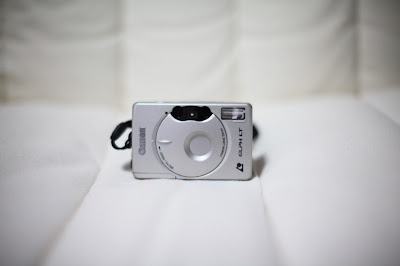I missed a chance to visit Cameron Highlands five years ago. It could be one of the reasons that I was quite excited for our new-year trip to the land. Cameron Highlands is one of the most extensive hill stations in Malaysia, well-known for its beautiful tea plantation and mossy forests that possess quite a number of natural trails for trekking.
I brought with me just a film camera (Olympus OM1) with 2 lenses (50mm and 28mm), all in one small bag. As the purpose is to go for a relaxing vacation, in the end only one roll of 36 frames was exposed (honestly, I should mention the other 5 frames in the Canon PnS using APS film). I bought a roll of 35mm Kodak ColorPlus 200 (ISO 200) in Vietnam few months ago, without knowing that it is not really a good film (maybe not as good as the Kodak Gold 200). To my eyes, the film is not very sharp and low contrast, plus the colors are not quite saturated. However, coupled it with the misty scenes and cloudy sky we had in Cameron Highlands due to the rainy season this month, this is not a bad combination indeed.
Tea Plantation: the green carpet.
Since no one worked on the New Year holidays, the place rested in its tranquil state.
Mossy Forest: there was a small rain when we entered the forest. The extreme moisture condition prevented us from taking photos (one should bring the PnS camera in this case). Got wet and mud all over.
Mount Brinchang: highest peak of the highland, blanketed in a cloud of cool mist. After climbing some staircases here, we were at 6666ft above the sea level. Again, no pic was taken due to the extreme condition that only iPhone's camera can be used :D
Cabbage Farm: we actually came here to witness the sunrise. However, the weather was not on our side. Instead of the usual colorful scene, we saw the transition from dark gray to light gray. Quite happy with the misty and peaceful scene though.
Vegetables Farm (Cameron apple): there are many farms here, from vegetables to flowers (rose, chrysanthemum) and strawberry farms.
Chrysanthemum Farm
Strawberry Farm
"Was it an enjoyable trip?" - "Yes, it was!!!"
"Will you plan to come back?" - "Hmm, may be, for the cold weather. But as long as we can avoid 9 or 10 hours on bus from the highland back to Singapore :D"
Analox











































